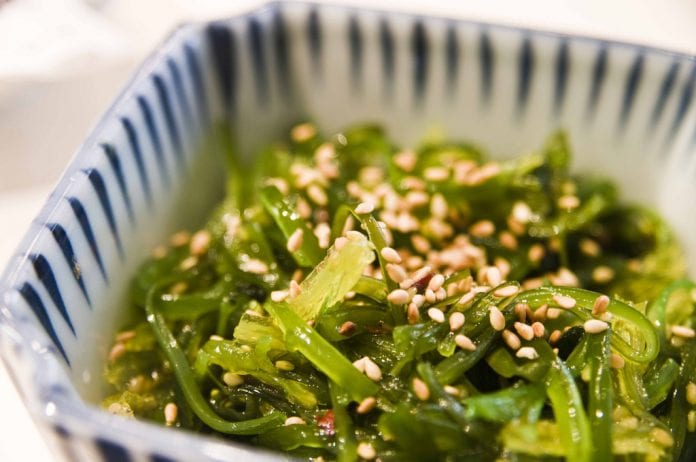Research on improving the growth, harvest and transport of farmed sugar kelp at the University of Alaska Fairbanks is getting a financial boost with a $500,000 grant from the U.S. Department of Energy.
Leading the research project will be Michael Stekoll, a biochemist with a joint appointment at the UAF College of Fisheries and Ocean Sciences and the University of Alaska Southeast.
Stekoll is already at work on a $418,000 National Sea Grant College Program project to develop cost-effective cultivation methods so Alaska producers can grow and harvest commercial quantities of sugar kelp, a brown algae whose scientific name is Saccharina latissima.
Stekoll said a consortium of people will work on the new project, including the Alaska Fisheries Development Foundation, and seaweed farmers, including Blue Evolution, a private company that cultivates and markets seaweed products. The Alaska project team also will include Hump Island Oyster Co., R&M Engineering, Efficient Coastal Resources and Kodiak Island Sustainable Seaweeds.
The big challenge is that fresh kelp now being produced has a very short shelf life, so growers are looking at a dry product, but they also have to develop a market for this product in the foodie market, said Quentin Fong, a seafood marketing specialist with the Sea Grant Marine Advisory Program and professor with the University of Alaska Fairbanks College of Fisheries and Ocean Sciences’ Kodiak Seafood and Marine Science Center.
Fong said he will be looking into markets for Alaska’s farmed sugar kelp over the next two years.
“If it is not marketed correctly, there will be no market,” he said.
Fong noted that the Island Institute in Maine is engaged in research on the market potential for seaweed, as Maine has the potential to be a leader in U.S.-grown edible seaweed products.
The Island Institute’s recent report notes that little is known about consumer preferences on food products that include seaweed as an ingredient. To address this issue the research project focuses on development and assessment of 10 prototype food products that do include seaweed as a key ingredient. They include a sea vegetable power bar, a dulse (sea lettuce) cucumber salad, sugar kelp flat bread, sea vegetable lasagna, maple dulse cranberry scone, sea vegetable chickpea salad, sea vegetable beans and sausage, sugar kelp shrimp tempura, savory sea vegetable and onion broth, and dulse ice cream. The last uses dry powdered wild dulse to flavor and color traditional French vanilla ice cream base.
The hope is to provide food manufacturers, retailers and commercial restaurants with concepts that inspire sale of food products featuring seaweed grown in Maine.
Many traditional supermarkets in the United States carry seaweed either dry in nori sheets in a form used for seaweed snacks, or in wet marinated form used in the sushi or deli case.
Researchers engaged in the project also identified a sampling of trend-setting fine dining restaurants in the United Kingdom, Spain, Ireland and the United States using sea vegetable in many forms, from broths to garnish.
Researchers said that the ongoing use of sea vegetables in London, Madrid and Dublin is helping to improve market acceptance, and that it appears that consumers are willing to try seaweed when the flavor is less fishy and more complementary.
“Perhaps the European market is a model of what we can expect for sea vegetable consumption in the near future here in the U.S.,” the report said.
Researchers also noted that seaweed consumption appears to be growing in Europe and has long been part of diets in Asia, while market acceptance I the U.S. is more limited.
The Island Institute’s summary report is online at http://www.islandinstitute.org/sites/default/files/Edible%20Seaweed%20Summary%20Report%209-15-17.pdf














